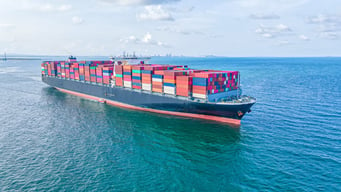Step 1: Understand the basics of freight costs
When we talk about understanding freight cost basics, we’re simply referring to the need for you to know what details you should prepare when seeking a price for goods transportation.
Specifically, the weight, dimensions, and nature of your cargo are key influences on the costs your carrier will incur to move it, and hence, on the size of your freight bill.
If there are differences between the information you supply and the real weight, dimensions, and type of cargo, your carrier’s final bill might be higher than the original quotation.
After spending time on this page, you will have an essential understanding of freight cost basics, meaning Step 1 is already complete.
Step 2: Gather your shipment details
So what are those essential details that a freight forwarder or carrier needs to give you an accurate freight price calculation?
- Weight: You’ll need to provide the exact weight of the goods you are shipping, as your carrier has a legal obligation to comply with weight restrictions when planning your freight’s transportation.
- Dimensions: Your carrier can’t move your shipment on the basis of its weight alone. For example, many types of goods will max out a vehicle’s physical carrying capacity, even though they are not heavy. The carrier must know the precise length, width, and height of your consignment, including skids, pallets, or other packaging. Shipping multiple pallets? Be sure to provide the dimensions of each loaded pallet. Note that the carrier will also use the weight and dimensions of your consignment to calculate its density—and the denser it is, the more economical it will be to ship.
- Shipment Origin and Destination: These are the remaining pieces of the freight calculation puzzle. Your carrier will use origin and destination details to establish the distance over which your freight will travel—and of course, distance is a critical factor in freight cost calculation.
Step 3: Use our freight cost calculator
With the detailed information from Step 2 in hand, moving forward with freight cost calculation becomes significantly more manageable. By utilizing our quick and accurate online freight cost calculator, you can effortlessly estimate the shipping expenses. This tool is designed to integrate and analyze the crucial factors like shipment weight, dimensions, origin, destination, and the type of service required. Simply input the gathered details, and our calculator will provide a reliable, instantaneous quote. This allows you to make informed, efficient decisions regarding your shipping options, ensuring no detail is overlooked.













